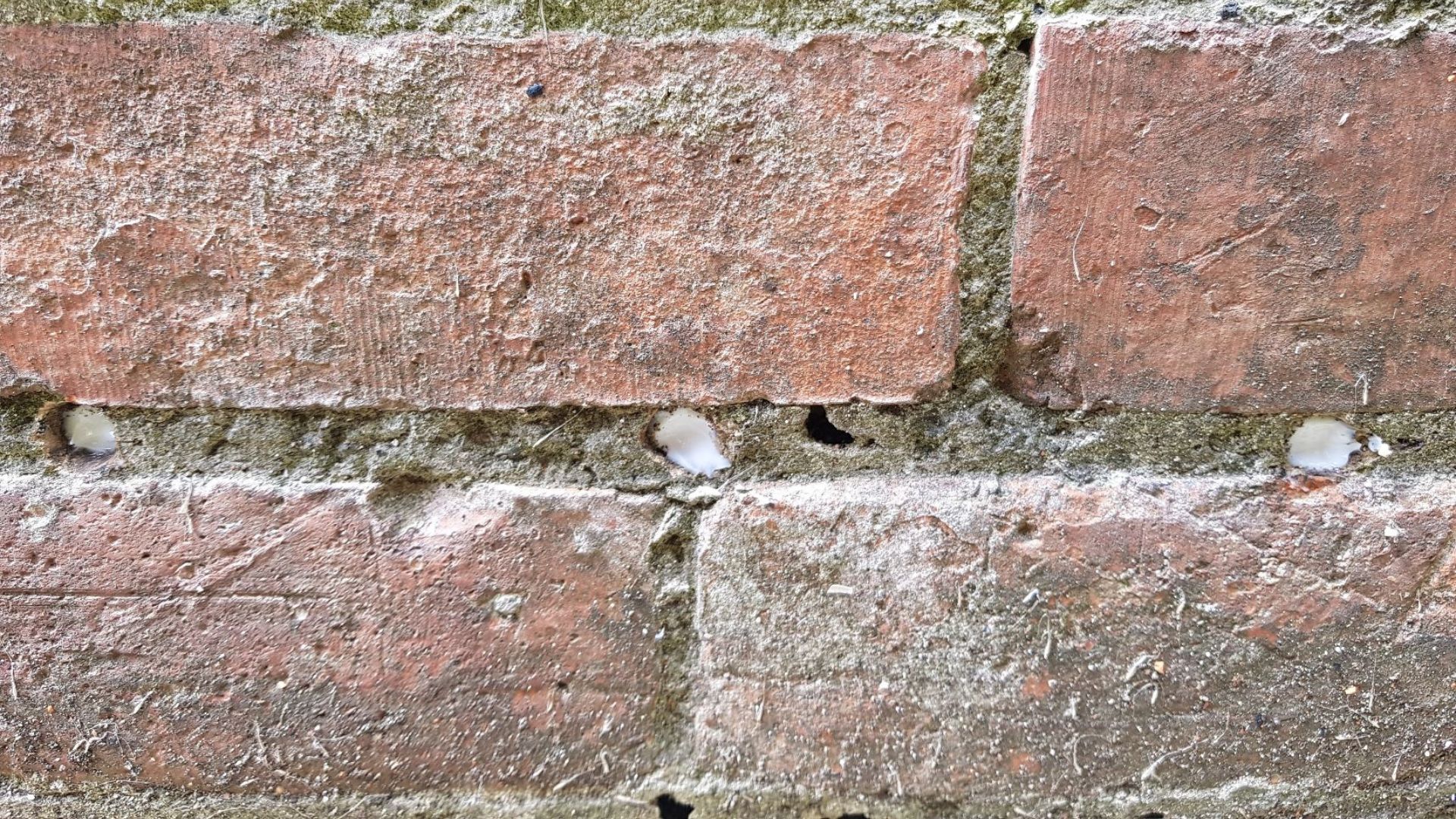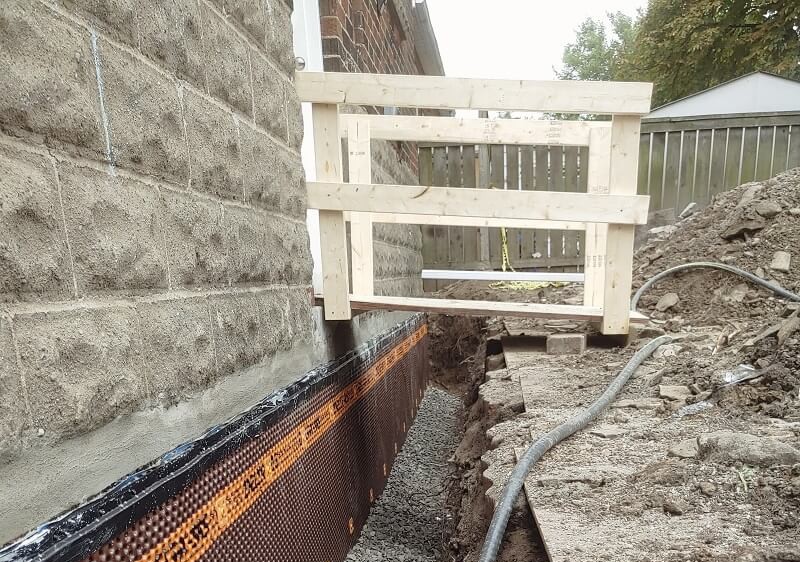Essential methods for mould removal newcastle that actually help
Essential methods for mould removal newcastle that actually help
Blog Article
Discovering the Numerous Strategies and Solutions for Effective Damp Proofing
Moisture in buildings postures significant obstacles to both architectural honesty and indoor air quality. Various techniques and remedies have emerged to combat this pervasive issue. From traditional damp-proof membrane layers to innovative chemical therapies, each technique offers one-of-a-kind benefits. Recognizing these alternatives is crucial for efficient moisture control. Nevertheless, picking the right service relies on certain structure conditions and needs, triggering more exploration into one of the most efficient wet proofing approaches readily available.
Comprehending the Sources Of Dampness
Moisture can develop from numerous sources, comprehending these reasons is crucial for efficient remediation. Generally, dampness originates from 3 primary sources: rising moist, permeating moist, and condensation. Increasing wet takes place when groundwater travels up-wards through permeable products, such as block or stone, frequently as a result of a lack of an efficient obstacle (mould removal newcastle). Passing through moist is generally triggered by exterior variables, including roofing leakages, malfunctioning rain gutters, or damaged walls, permitting water to infiltrate a residential property. Condensation, on the other hand, arises from excess moisture airborne, typically exacerbated by poor air flow and temperature differences, leading to water droplets basing on surface areas. Determining these underlying concerns is important, as each kind of moisture calls for a customized technique for remediation. Correct assessment helps in figuring out the most reliable services, inevitably safeguarding the structural honesty of a structure and boosting interior air quality
Typical Damp-Proof Membranes

Chemical Damp-Proofing Solutions
Chemical damp-proofing services use an ingenious approach to stop wetness breach in structures. These methods usually involve the application of liquid chemicals that penetrate masonry and form an obstacle versus rising damp. Typically made use of chemicals include silanes, siloxanes, and other water-repellent representatives that respond with surface materials to produce a hydrophobic layer.The application process normally requires drilling holes into the walls, injecting the chemical solution, and allowing it to treat. This approach is specifically useful for older structures where traditional damp-proof membrane layers may be not practical. Additionally, chemical damp-proofing can be less turbulent and more economical than considerable restoration projects.While reliable, these remedies rely on proper application and environmental problems for peak efficiency. Regular maintenance and surveillance are important to guarantee the durability of the damp-proofing treatment. On the whole, chemical damp-proofing stands for a versatile choice for protecting structures against moisture-related damage
Cavity Wall Building And Construction Methods
Cavity wall surface building techniques offer various benefits, particularly in moisture control and energy effectiveness. By including an air space between 2 layers of stonework, these walls properly reduce water access while boosting insulation. This combination not only secures structures from dampness however additionally contributes to lowered power intake.
Benefits of Dental Caries Walls
When taking into consideration efficient moist proofing techniques, the benefits of cavity walls attract attention plainly. Dental caries wall surfaces contain 2 different layers, creating an air space that efficiently minimizes wetness penetration. This style lessens the threat of wetness, as the outer wall surface works as an obstacle against rain and water ingress. Additionally, cavity wall surfaces boost thermal insulation, which contributes to energy efficiency by minimizing heat loss. They also provide audio insulation, aiding to create a quieter interior setting. Additionally, the air void permits for ventilation, which assists in dampness control and minimizes the possibility of mold and mildew growth. These advantages not just boost the general comfort of a building yet likewise add to its long life and architectural integrity.
Wetness Control Techniques
Efficient moisture control methods are vital in cavity wall construction to ensure long-term protection against wetness. One primary method entails the unification of weep openings, which help with water drainage from the cavity, protecting against build-up. In addition, making use of breathable membrane layers can assist handle moisture degrees while enabling entraped vapor to run away. Correct positioning of insulation is also essential, as it must not obstruct drainage paths. Ensuring that the external leaves of the tooth cavity wall surface are created with waterproof materials improves total longevity. Routine maintenance checks are important to determine any type of clogs or damages early, protecting the framework's stability. Ultimately, a combination of these strategies forms a robust defense versus dampness intrusion in dental caries wall surfaces.
Insulation and Power Performance
Insulation plays a crucial duty in enhancing power performance within dental caries wall construction. By integrating protecting materials, these walls develop a thermal barrier that reduces heat loss and decreases power intake. Efficient insulation not just aids keep a stable interior temperature level but additionally alleviates the risk of wetness, as it protects against condensation within the wall surface tooth cavity. Various techniques, such as the use of inflexible foam boards or mineral wool, can be used to accomplish suitable insulation performance. Furthermore, correct installation is important to guarantee that voids and gaps are minimized, which can otherwise jeopardize power performance. Ultimately, a well-insulated cavity wall contributes greatly to total sustainability and reduces heating and air conditioning prices for property owners.
Exterior Damp Proofing Methods
External damp proofing techniques are important for safeguarding structures from moisture seepage. 2 effective techniques consist of the application of water resistant membranes and the installation of French drains. These options help reduce water buildup and maintain the integrity of buildings.
Waterproof Membrane Layer Application
While various methods exist for avoiding dampness access, the application of water-proof membrane layers remains a highly effective exterior moist proofing method. These membrane layers are typically made from products such as polyethylene, rubber, or customized bitumen, providing a durable barrier versus water penetration. The installment process includes applying the membrane layer to the outside surface areas of wall surfaces or foundations, ensuring full coverage to stop leakages. Correct bond and securing at joints are critical to maximizing performance. Waterproof membrane layers can be applied in different kinds, consisting of fluid finishings and sheet membranes, permitting for flexibility based on the certain needs of the framework. This approach not just safeguards buildings from moisture yet additionally enhances their durability and structural stability.
French Drain Setup
One effective method for handling groundwater and avoiding wetness buildup around a structure's structure is the setup of a French drain. This drainage system consists of a trench filled with gravel and a perforated pipe that redirects surface area water far from the foundation. Proper installment calls for cautious planning, making sure that the drain slopes away from the structure to facilitate excellent water flow. In addition, the area of the drainpipe is essential; it must be positioned in areas prone to pooling or excess moisture. Normal upkeep, including clearing up particles from the gravel and making certain the pipe remains unblocked, is crucial for long-term performance. Inevitably, a well-installed French drainpipe can significantly decrease the threat of water-related issues in cellars and foundations.
Interior Waterproofing Approaches
Interior waterproofing strategies are crucial for protecting a building's interior from wetness seepage and potential water damages. These techniques typically include the application of specialized materials and methods created to develop a dampness obstacle within the framework. One common method is using water-proof finishes or sealants on walls and floorings, which protect against wetness from penetrating surfaces.Additionally, installing indoor drainage systems, such as sump pumps, can efficiently manage water buildup in cellars and crawl spaces. One more method involves using vapor obstacles, which are set up to inhibit wetness movement from the ground into living spaces.Moreover, dealing with any type of splits or spaces in wall surfaces or foundations with ideal sealants assures a detailed defense against water breach. By implementing these indoor waterproofing approaches, homeowner can substantially lower the threat of mold growth, architectural damages, and other moisture-related concerns. Appropriate execution of these methods is important for long-term security and building integrity.
Regular Maintenance and Examination Practices
Regular maintenance and inspection practices are important for ensuring the lasting effectiveness of moist proofing options in any building. Routine checks make it possible for property proprietors to recognize early indicators of moisture breach, such as peeling paint, mold and mildew growth, and mildewy odors. These signs can signal underlying concerns that need immediate attention.Inspections need to be conducted at the very least every year, focusing on at risk areas like basements, crawl areas, and outside walls. Throughout these analyses, homeowner should take a look at sealants, drain systems, and air flow to confirm they operate correctly.Additionally, maintaining downspouts check here and rain gutters is crucial, as blocked systems can bring about water build-up near the structure. Implementing a regular maintenance routine, in addition to prompt repairs, can significantly extend the life-span of wet proofing measures and safeguard the structural stability of the building. Positive actions eventually add to the general health and wellness of the living atmosphere.
Regularly Asked Questions
For How Long Does Damp Proofing Typically Last?
The duration of moist proofing performance differs, usually lasting between 20 to half a century. Variables such as application top quality, environmental conditions, and upkeep practices considerably influence the longevity of the wet proofing treatment.

Can I Damp Evidence My Home Myself?
The private contemplated the usefulness of do it yourself damp proofing. With appropriate research and the appropriate materials, it is feasible. They likewise acknowledged the importance of expert advice to guarantee long-lasting effectiveness and stop future problems.
What Are the Indicators of Ineffective Damp Proofing?
Signs of ineffective damp proofing include relentless mildewy odors, visible mold growth, peeling paint, moist patches on walls, and wood decay - mould treatment newcastle. House owners ought to deal with these problems promptly to avoid further damage and health concerns
Does Damp Proofing Affect Indoor Air Top Quality?

Just How Much Does Professional Damp Proofing Price?
Professional moist proofing expenses differ considerably, commonly ranging from $1,000 to $5,000 depending upon the residential or commercial property's dimension, the level of the damp issue, and picked methods. Each circumstance calls for a customized analysis for accurate pricing. Frequently, wetness stems from 3 primary sources: increasing moist, passing through damp, and condensation. When thinking about reliable damp proofing methods, the benefits of cavity walls stand out plainly. Exterior damp proofing techniques are vital for protecting frameworks from moisture infiltration. While various methods exist for stopping wetness ingress, the application of water resistant membrane layers stays an extremely effective exterior wet proofing method. Signs of ineffective damp proofing consist of relentless mildewy odors, noticeable mold and mildew growth, peeling paint, damp patches on wall surfaces, and wood decay.
Report this page